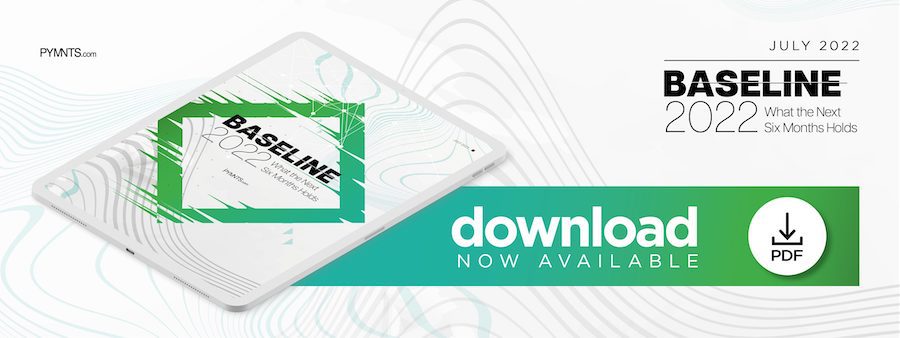Evolving Payments Trends Amid Continued Economic Turbulence

Brian Caldarelli, executive VP and chief financial officer at PCSU, writes in the PYMNTS eBook “Baseline 2022: What the Next Six Months Holds” that the rest of 2022 will be marked by steady consumer spending, increased reliance on credit and continued growth in digital adoption.
The economic landscape continues to be shaped by global and national events, and the consequences are felt on every level, from the biggest bank to the individual consumer. The unexpected turmoil that shook the first half of 2022 will likely reverberate through the rest of the year, and potentially into early 2023.
Inflation is at a 40-year high, and despite the Federal Reserve’s most aggressive interest rate hike yet in June, inflation is expected to remain elevated throughout the remainder of the year, until — hopefully — returning to much lower levels in 2023. Unsurprisingly, the sectors with the highest growth include shelter, gasoline and food, and those prices are expected to hold steady at a higher level until well into 2023. This will have far-reaching effects on not only consumers, but their trusted financial partners. Here are three trends that PSCU, the nation’s premier payments credit union service organization (CUSO), will be monitoring throughout the rest of the year:
Steady Consumer Spending Through 2022
Many Americans are already feeling the effects of inflation in their day-to-day lives, experiencing higher prices at grocery stores, convenience stores and at fuel pumps. That being said, unemployment remains low — 3.6% in May — and job growth is steady, with more than 400,000 new jobs added for each of the past 12 months. While these trends should continue to drive consumer spending for the time being, steep inflation levels are expected to adversely affect both. It won’t be surprising to see a dip in consumer spending before the inflation rate eventually lowers in 2023.
Increased Reliance on Credit
Consumers have been shifting their attention away from goods and toward experiences and services for some time now, making bigger-ticket purchases — particularly in the travel and entertainment sectors — and relying more on credit to do so. In the last year, PSCU has reported greater growth in credit purchases over debit, with credit card purchases up 15% and debit card purchases up just 6% in May 2022. As consumer liquidity wanes, this trend will likely continue, and perhaps even widen. Following the recent period of tangible credit card balance paydowns, we are already seeing a growth in balances, especially as a result of those more recent bigger-ticket purchases. The next several months will undoubtedly put extra financial strain on many consumers, and financial institutions should be prepared to support their members.
Digital Continues to Grow
Digital adoption, including usage of contactless cards and mobile wallets, continues to accelerate — and financial institutions must keep up. According to recent PSCU data, contactless tap-and-go credit transactions now make up 22% of total card present volume (up 8% from the year prior) and contactless tap-and-go debit transactions make up 24% (up 6% from the year before). Meanwhile, mobile wallet credit transaction volume finished up 75% in May compared to the year before, while mobile wallet debit transaction volume grew by 80% in the same period. Financial institutions can succeed by meeting their members where they are and making these digital offerings available, while staying competitive in a market that is anything but predictable.
